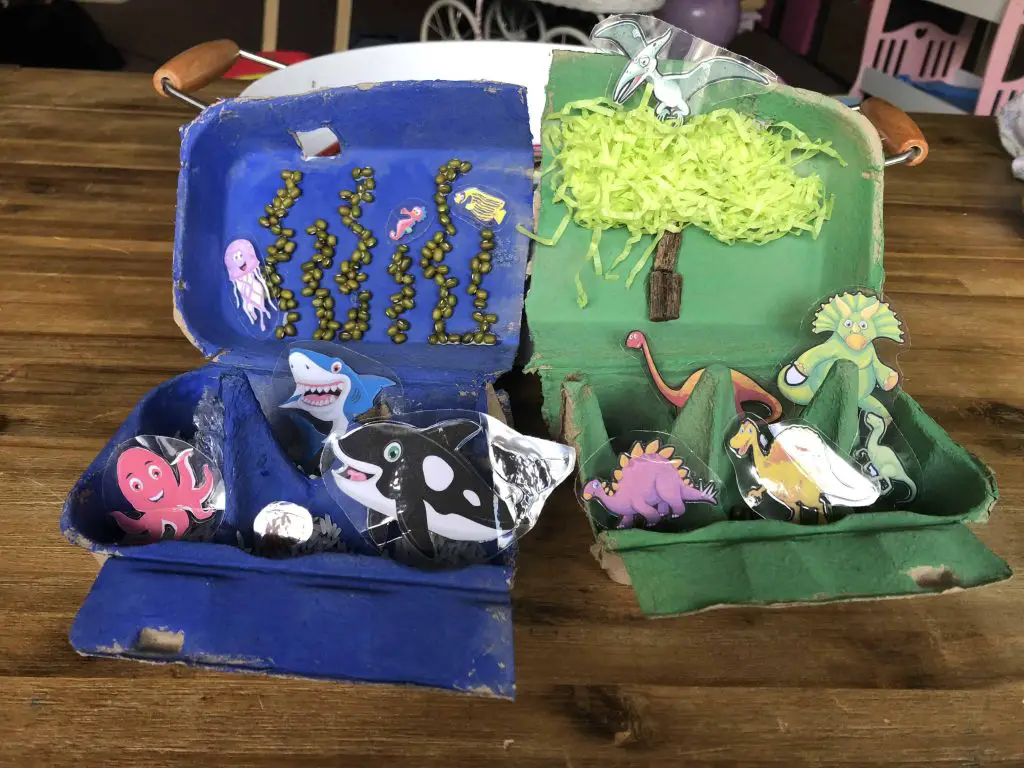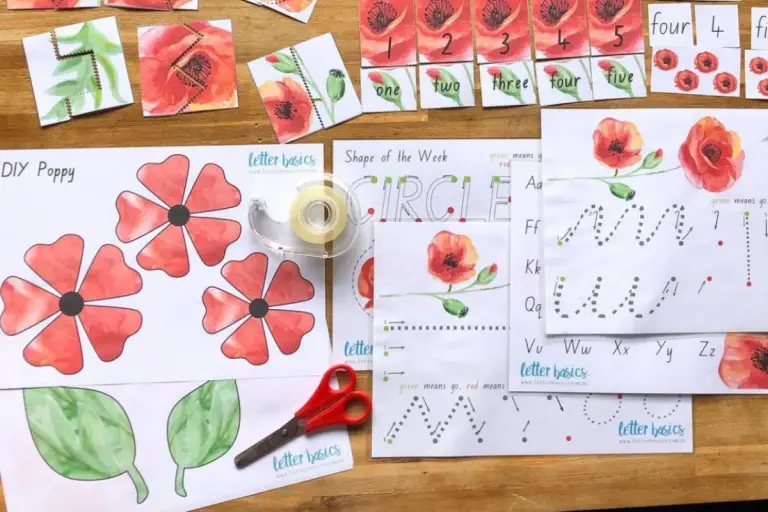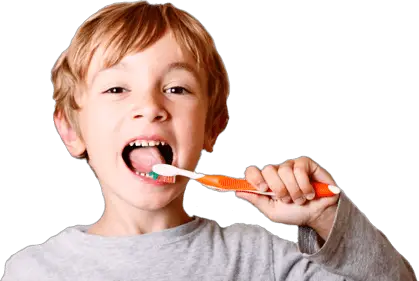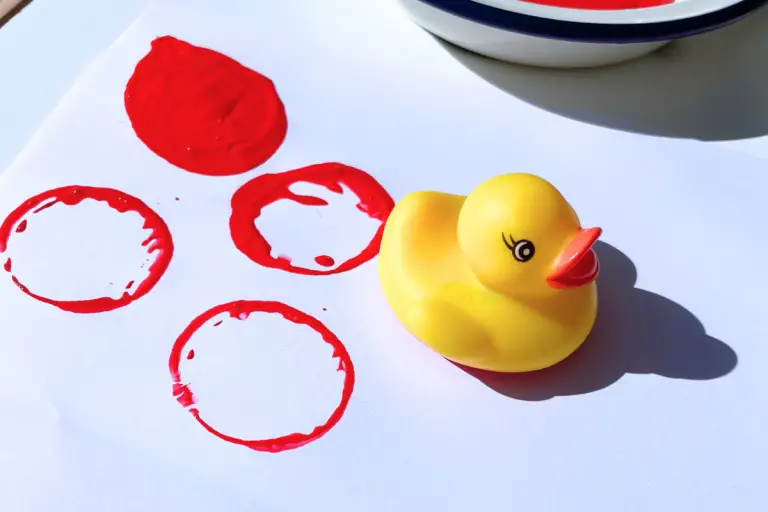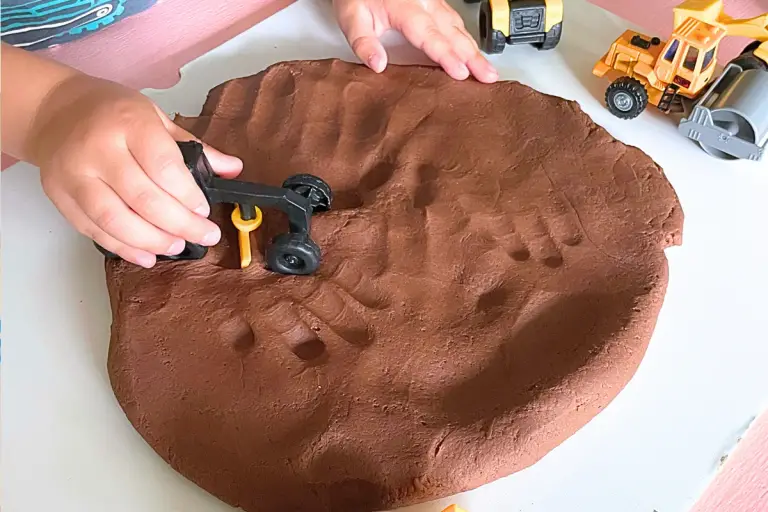Ultimate Guide to Loose Parts Play
Disclosure: This blog contains affiliate links which I may earn a small commission from if you purchase through them, at no extra cost to you.
Are you ready to learn about the ultimate fun in loose parts play?
Buckle up, because we’re about to dive into the world of creativity and invention!
First things first, parents have always known that open-ended toys and resources are the way to go.
I mean, who hasn’t heard the saying, “2 minutes of play with the toy, hours with the box it came in”?
And let’s not forget about the toddler heaven that is the second drawer down in the kitchen. Rocks, sticks, and leaves? Oh, kids love them!
Enter loose parts play – the theory that attracts and feeds a child’s innate curiosity.
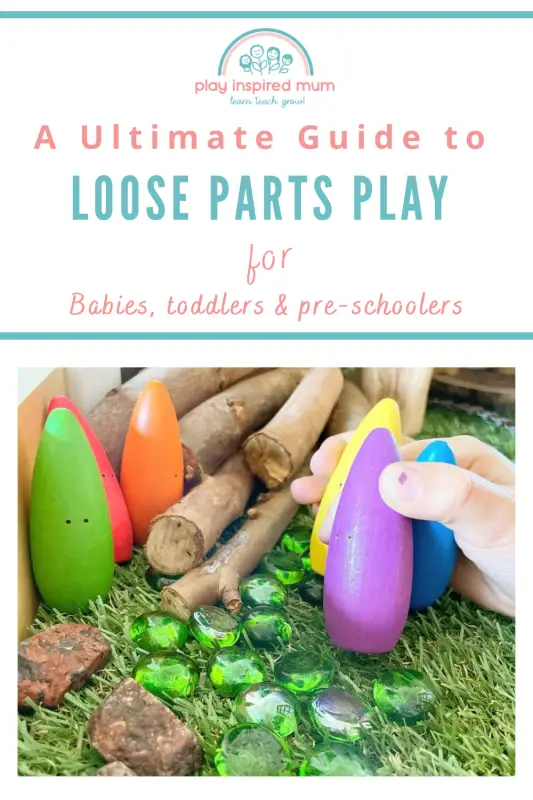
Loose Parts Play Theory
Back in 1972, an architect named Simon Nicholson came up with the brilliant idea that loose parts presented boundlessly more opportunities for creative engagement than boring, rigid materials and environments.
In any environment, both the degree of inventiveness and creativity, and the possibility of discovery, are directly proportional to the number and kind of variables in it.
Simon Nicholson, ‘How NOT to Cheat Children: The Theory of Loose Parts‘
Nicholson believed that loose parts presented boundlessly more opportunities for creative engagement than inanimate, rigid materials and environments.
The loose parts of which he speaks can be described as materials that can be:
- manipulated
- designed and redesigned
- toyed with
Children are born curious. Loose parts play presents materials that children can and need to touch and interact with. This physical engagement is an aspect of loose-part play that encourages children’s natural curiosity and participation.
Nicholson was in thought that being creative was not limited to a gifted few. Rather than all children are born as creative beings and enthusiastic about experimenting and discovering new conceptualisation.
He says that there is no evidence that some babies are born creative and inventive while others are not. However, there is evidence that all children love to interact with variables such as
- materials
- shapes
- smells
- physical phenomena, ie gravity, magnetism, electricity
- states of matter, ie gas, fluids
- sounds
- music
- motion
- chemical reactions ie cooking, fire
- living things, ie plants, people, animals,
These variables allow children to explore, experiment, invent and discover while having fun through play.
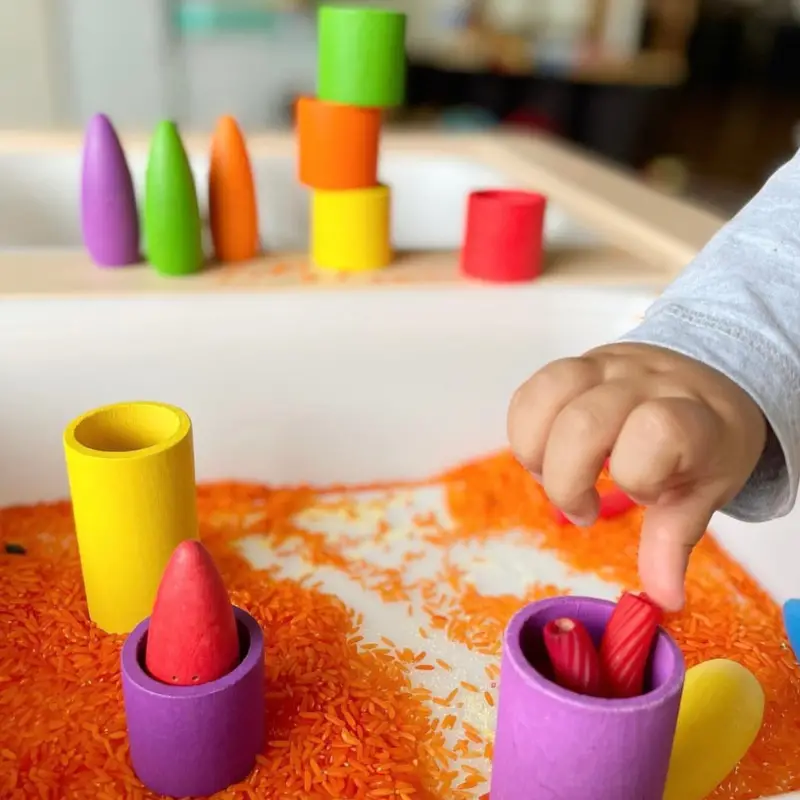
What is loose parts play?
So, what are loose parts exactly?
They’re materials that can be manipulated, designed and redesigned, and toyed with. Think of them as variables that allow children to explore, experiment, invent, and discover while having a blast through play.
And the best part?
Loose parts play supports discovery, creativity, invention, divergent thinking, logical thinking, problem solving, imagination, and ingenuity. You can add loose parts to any environment and watch as a child’s imagination runs wild.
Loose parts are open-ended, meaning they’re not limited to just one use.
Take a cardboard box, for example.
It can be a race car, a cubby house, a market stall, a puppet theatre, a dinosaur, a barbeque, a tray of cookies, a guitar, a turtle costume, and so much more.
The possibilities are endless!
Sprinkle some buttons on play dough cupcakes or flowers in a field of felt. They can be a pond in a small world or wheels on a toilet tube car. Use pom poms as food in a toy kitchen, balls to drop into ball runs, or bubbles in Teddy’s bubble bath.
A play couch can be a fort, cubby, jetty, or brachiosaurus.
The sky’s the limit with loose parts play!
Get ready to dive into the world of open-ended play!
It’s a type of play where creativity, imagination, and self-exploration come together to create an awesome experience. No rules, no instructions, just pure, unbridled fun.
What is open-ended play?
In open-ended play, kids get to explore their surroundings and materials in their own way. They get to test their theories and learn from their own experiences. This type of play allows them to focus on the process rather than the end result, which is a great way for kids to learn and develop a true love for learning.
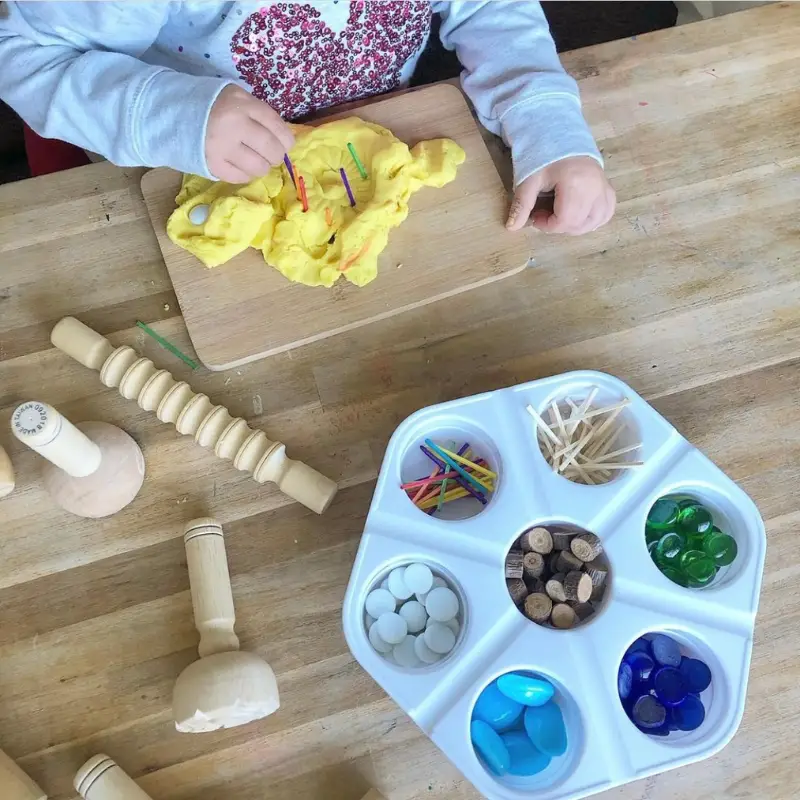
What is heuristic play?
Now, let’s talk about heuristic play! It’s a fancy term for providing children with a bunch of random, everyday materials to explore and manipulate as they please. Think wooden spoons, shells, stones, and fabric – basically, anything they can get their little hands on.
The idea behind heuristic play is to let kids be curious and explore on their own terms, which is crucial for their cognitive and physical development. By experimenting, problem-solving, and using their creativity, kids can also strengthen their fine motor skills, develop spatial awareness, and understand cause-and-effect.
Teachers use heuristic play all the time, but parents can also incorporate it into playtime at home. It’s flexible, low-cost, and adaptable to suit any child’s interests and abilities. So why not give heuristic play a go and let your kids’ imaginations run wild?

what are the 7 types of loose parts?
Loose parts play is all about using open-ended materials to encourage exploration, experimentation, and creativity. Here are some examples of the different types of loose parts that kids can play with:
- Natural materials, like rocks, stones, shells, wood, leaves, branches, and pine cones.
- Found objects, like buttons, bottle caps, corks, fabric scraps, cardboard tubes, and old keys.
- Open-ended materials, like blocks, magnetic tiles, LEGO bricks, and other construction toys.
- Small loose parts, like beads, marbles, and small stones.
- Containers, like baskets, jars, and boxes, that can be used to sort and store loose parts.
- Textiles, like scarves, ribbons, and fabric strips, can be used for dress-up or as building materials.
- Tools, like hammers, screwdrivers, and pliers, can be used for building and tinkering.
is loose parts play Montessori
Loose parts play is often associated with Montessori education, but it’s actually used in many different educational philosophies and approaches. Maria Montessori emphasized the importance of using natural and open-ended materials, while architect Simon Nicholson introduced the concept of loose parts in the 1970s.
Are loose parts reggio emilia?
The Reggio Emilia approach to early childhood education also values loose parts play. In this philosophy, loose parts are seen as important tools for fostering creativity, exploration, and problem-solving in children. Loose parts are often used to support project-based learning, where children work collaboratively to investigate a topic of interest.
So whether you’re a parent, caregiver, or educator, consider incorporating loose parts play into your child’s playtime! It’s a fun and flexible approach that can be adapted to suit individual interests and abilities and provides hours of meaningful play.
What do loose parts play look like in the early years?
Loose parts play is like a magical world of exploration, creativity, and problem-solving skills for our little ones. They can mix and match, stack and sort, and let their imaginations run wild with these versatile materials. It’s like a playground of endless possibilities!
Not only is it super fun, but loose parts play also helps children develop crucial skills.
They can work on their fine motor skills, hand-eye coordination, and even develop their social skills through cooperation, communication, and collaboration with others.
Plus, it’s a fantastic way to introduce mathematical and scientific concepts, like shape, size, and cause and effect.
So, what are these loose parts we’re talking about?
Think blocks, stones, shells, pine cones, buttons, corks, fabric scraps, magnetic tiles, construction toys, scarves, ribbons, and the list goes on!
The best part?
There are no rules or limitations to what children can create with them. It’s all about exploring, discovering, and having a blast along the way.

How do you stimulate a child’s creativity?
Let’s get those creative juices flowing!
There are tons of ways to spark your child’s imagination and encourage their creativity. Here are some awesome ideas to try out:
- Give them open-ended materials like paint, clay, or blocks to play with and create whatever they want.
- Encourage imaginative play by providing costumes, props, and a space to let their imaginations run wild.
- Ask open-ended questions that encourage them to think outside the box and come up with their own ideas.
- Support divergent thinking by praising creative ideas and encouraging them to think of multiple solutions to a problem.
- Give children autonomy and let them make their own decisions and choices.
- Allow for a little risk-taking, like trying out a new art technique or building something challenging.
- Provide opportunities for exploration by taking them on outdoor adventures or visiting new places.
- Read books and tell stories that inspire creativity and imagination.
- Play games that encourage problem-solving, critical thinking, and creativity.
- Be a role model by showing your own creativity and trying new things.
Remember, every child is unique, so what sparks one child’s creativity might not work for another.
So, provide a variety of materials and opportunities and support their curiosity and imagination.
With a little encouragement, you can help your child become a creative genius and develop a lifelong love of learning.
What is an example of creative play?
Let’s get creative with playtime!
Imagine a child turning a simple object or material into something entirely new and exciting – like turning a cardboard box into a:
- a car that races through the streets
- the spaceship that travels to distant planets
- a house where they can cook up some imaginary meals
By using their imagination, kids can create their own stories and immerse themselves in a whole new world.
Another way to get those creative juices flowing is through dramatic play.
Dressing up and pretending to be a doctor, firefighter, or teacher can transport kids to a whole new world where they can become whoever they want to be!
They can even use props, costumes, and dialogue to make their play even more exciting.
And let’s not forget about using art materials to create something totally unique and original.
With paint, clay, or markers, a child can create amazing artwork that reflects their individual style and imagination.
Creative play is super important for children’s development. It encourages them to explore their interests, develop problem-solving skills, and express their own unique creativity. So let’s get creative and have some fun!
How do I teach my child to think creatively?
Are you ready to unleash your child’s creativity?
Here are some fun and funky ideas to get their creative juices flowing:
Resources
- Get open-ended materials: Think blocks, play dough, art supplies, and loose parts. These are perfect for little minds that love to explore and experiment!
- Encourage imaginative play: Let your child’s imagination run wild with dress-up clothes, dolls, and stuffed animals. You never know what stories they’ll come up with!
- Create opportunities to explore: Take your child on adventures to explore new environments and experiences. Who knows what inspiration they’ll find!
Guidence
- Ask wacky questions: Get your child thinking outside the box with questions like “What if we had a pet unicorn?” or “How would you build a rocket powered by cheese?”
- Think divergently: Encourage your child to come up with lots of different ideas, even if they seem silly. There’s no such thing as a wrong answer when you’re being creative!
- Give your child free rein: Let your little one call the shots and take the lead in their play and learning experiences.
- Embrace risk-taking: It’s okay to make mistakes! Create a safe space where your child can take risks and try new things without fear of failure.
Get Involved
- Get storytime savvy: Read books and tell stories that inspire creativity and imagination. You might even discover some new favorites yourself!
- Play like a boss: Have fun playing games that encourage creativity, like making up your own game or creating a story together.
- Lead by example: Show your child how to embrace their creativity by trying new things and exploring your own interests.
Remember to be patient and let your child take the lead.
Who knows where their creativity will take them?
What age are loose parts play for
Let’s talk about loose parts play and how it can be a fun activity for kids of all ages!
Yes, even the little ones can get in on the action.
For babies and infants, soft fabrics, balls, and other objects that can be touched and mouthed are perfect for loose parts play. And for safety purposes, parents can use plastic jars or ziplock bags to store any unsafe objects.
As children grow, they can explore more complex objects and use them to build intricate structures, engage in imaginative play, and explore cause-and-effect relationships.
And when they get older, loose parts can even be used for advanced building and engineering projects, or for creative expression through art and design.
The great thing about loose parts play is that it’s versatile and open-ended, so it can be adapted to suit a wide range of ages and developmental stages.
Just make sure to provide age-appropriate and safe materials, and supervise younger children to ensure their safety.
So go ahead and let your kids loose with some loose parts!

Are loose parts appropriate for infants and toddlers?
Loose parts play is not just child’s play – it’s a serious business!
Even infants and toddlers can get in on the fun, but safety is always key.
Soft fabrics, balls, and other chew-safe objects are great for little ones to explore through touch and, let’s be honest, taste-testing.
Toddlers can use loose parts to stack, sort, and discover cause-and-effect relationships.
It’s like science, but with more giggles.
But don’t just toss any old thing into the playpen!
Make sure materials are age-appropriate, non-toxic, and easy to clean.
Plus, keep a watchful eye on your little one to ensure they stay safe and sound.
By encouraging loose parts play, you’re helping your child develop their fine motor skills, hand-eye coordination, cognitive abilities, and creativity.
Plus, it’s a whole lot of fun for everyone involved!
How do you create a creative environment for kids?
If you want to create a space where creativity flourishes, there are a few things you can do.
First off, make sure you’ve got some open-ended materials on hand. These could be things like blocks, paint, or other items that can be used in lots of different ways.
Next, set the scene. Your space should be comfy and inviting, with plenty of room to play and experiment. You might want to add some natural elements like plants or rocks to help inspire your little ones.
Don’t forget to display your child’s artwork! It’s a great way to encourage creativity and give them a sense of pride in their accomplishments.
Make sure you have a quiet space for reading or just relaxing, and that your environment can be flexible to meet your child’s changing interests and needs.
And most importantly, be a supportive adult! Give your kiddos plenty of positive feedback and reinforcement for their creative efforts. This will help build their confidence and inspire them to keep exploring and learning.
With a little bit of effort, you can create an environment where creativity thrives!
What is a ‘yes’ environment for children?
Are you looking for ways to create a “yes” environment for children? Well, look no further! A “yes” environment is all about giving children the freedom to explore and take risks, without constant adult intervention or restriction. And let’s be real, who doesn’t love a little bit of freedom?
Here are some key characteristics of a “yes” environment:
- Safety: Safety first, always! The environment should be free from hazards that could harm children.
- Exploration: Let those kiddos explore and make their own choices within a safe and supportive environment. Let’s give them some independence, shall we?
- Supportive adults: Of course, we can’t forget about the grown-ups! Adults in the environment should provide guidance and support when needed, while also allowing children to take risks and make mistakes.
- Flexibility: Change is good, right? The environment should be adaptable to the changing needs and interests of children.
- Positive feedback: Who doesn’t love a good ol’ pat on the back? Children should receive positive feedback and reinforcement for their efforts, which can help build confidence and encourage further exploration.
- Child-centered: Remember, it’s all about the kids! Parents should focus on the needs and interests of children when creating the environment.
- Opportunities for learning: Let’s make learning fun, shall we? The environment should provide opportunities for children to learn through their experiences, including hands-on exploration, play, and social interaction.

How do you introduce loose parts play?
Now, let’s talk about introducing loose parts play. This is a super fun and engaging activity for children of all ages. Here are some steps to follow:
- Gather materials: Collect a variety of loose parts, like rocks, shells, sticks, fabric scraps, beads, and other small objects. Just make sure they’re safe and appropriate for the age and development level of the children who will be playing with them.
- Set up the environment: Create an inviting play area where children can explore loose parts. Think of it like creating a little adventure land!
- Introduce the materials: Start by introducing a few materials at a time, so that children can become familiar with them and explore them in depth.
- Encourage exploration: Let those little explorers go wild! Give children the freedom to explore the materials in their own way, without setting any specific rules or expectations.
- Provide guidance and support: As children play, observe their interactions with the materials, and provide guidance and support as needed. You might offer suggestions for new ways to use the materials or help children problem-solve if they encounter a challenge.
- Foster creativity: Let those imaginations run wild! Encourage children to use their imaginations and creativity as they play with loose parts.
Can children cheat in loose parts play?
Now, some of you may be wondering if children can cheat in loose parts play. The answer is nope! Loose parts play is all about exploring and experimenting with materials in their own way, with no right or wrong approach. Since there are no set rules or expectations for using the materials, children are free to follow their own interests and ideas. So, let’s encourage those little ones to get creative and have some fun!
By providing children with the opportunity to explore and experiment with loose parts, parents, caregivers, and educators can help support their natural curiosity and creativity, and provide a rich and engaging learning experience. So go forth and create that “yes” environment, and let those little ones explore to their hearts’ content!
What can I use for loose parts play
Are you ready to get your kiddos’ creative juices flowing? If so, let’s talk about loose parts play! This cool and fun way of play is all about giving your little ones the freedom to explore and create with different materials. Check out some examples of materials you can use:
Nature is your friend! Grab some rocks, pinecones, shells, leaves, acorns, sticks, and any other natural goodies you can find. The sky’s the limit! Encourage your kiddos to create sculptures, build structures or use them as props for their imaginative play.
Reduce, reuse, recycle, baby! Let’s keep the environment clean while we’re at it. Make use of empty cardboard boxes, toilet paper rolls, bottle caps, and other recyclables. They can be perfect for building, art projects or playing make-believe.
Got fabric scraps? Yes, you do! Find some scraps of fabric, ribbon, and other textiles to spice up your loose parts play. Encourage your kiddos to create costumes, build forts or even make soft sculptures.
Don’t forget everyday household items! Spoons, bowls, tongs – even things you wouldn’t expect to use for play can be perfect for sensory experiences, like pouring, scooping and sorting.
Let’s get artsy! Paint, markers, glue, and other art materials can also be used to decorate and embellish your kiddos’ loose parts creations.
By providing your kids with these kinds of materials, you’ll help them to explore their natural creativity and curiosity.
So, what are you waiting for? Let’s get started!
What are natural loose parts
Do you know what’s better than fancy toys? Natural loose parts! You know, the stuff you find in your backyard like rocks, sticks, leaves, pine cones, and flowers. They are perfect for loose parts play, which means you can build, create art, and even use them for sensory play.
And guess what? They’re totally free! Yup, you don’t have to spend a single penny on them. Plus, they’re awesome because they connect kids to nature and make them appreciate the beauty of the great outdoors.
But, as always, safety first! Keep in mind the age and development level of the children and make sure the materials are safe to use. For instance, if you have little ones around, keep an eye on them when using small objects like acorns and pine cones.
So, what are you waiting for? Grab some natural loose parts and let your creativity run wild! Who knows what amazing things you’ll come up with. The possibilities are endless!
Loose Parts Play Benefits
Did you know that loose parts play is not only super fun, but also has a ton of benefits for kids? Here are just a few:
- Get creative: With no set rules or expectations, loose parts play encourages children to get creative and use their imaginations. They’ll come up with all sorts of new and unexpected ways to use the materials.
- Problem-solving skills: Loose parts play gives kids the chance to experiment and problem-solve. They’ll try out different combinations of materials, test their ideas, and learn through trial and error.
- Sensory development: Many loose parts materials offer opportunities for sensory exploration. Kids can feel different textures, hear different sounds, and explore the world with their senses.
- Social skills: When kids engage in loose parts play, they often work together, share materials, and collaborate on projects. This helps foster important social skills like communication, cooperation, and teamwork.
- Language development: As kids engage in loose parts play, they often describe what they’re doing or share their ideas with others. This can help support their language development and build their vocabulary.
- Independent play: With no rules to follow, kids can engage in loose parts play independently, following their own interests and ideas.
So, go ahead and gather some loose parts materials like rocks, sticks, and pine cones, and let your kids’ imaginations run wild!
How does loose parts inspire creativity?
Loose parts play is the perfect recipe for a creativity explosion!
Here’s how it works:
The sky’s the limit: With no rules or guidelines, kids are free to let their imaginations run wild and come up with amazing ideas on their own.
Versatile materials: Loose parts can be used in countless ways, meaning that a single item can be used for many purposes. Blocks can become anything from buildings to spaceships, and imagination is the only limit.
Mix it up: Combining different loose parts can lead to some pretty impressive creations! Kids love to mix and match materials to see what cool things they can come up with.
No judgment zone: Loose parts play is all about exploring and experimenting, with no right or wrong way to play. This encourages kids to take risks, be daring, and try new things without fear of judgment.
Story time: Loose parts play is also a great way to get creative with storytelling! Kids can create their own imaginative worlds and bring their characters to life with ease.
In a nutshell, loose parts play is all about freedom, creativity, and endless possibilities. So let those imaginations run wild and see what magic can happen!
What can toddlers learn through loose parts?
Oh boy, do I have some exciting news for you! Toddlers can learn a ton of new skills by just playing around with random stuff. Let me tell you all about it:
First off, we’ve got sensory exploration. Toddlers can dive into a whole world of textures, colors, shapes, and sizes by playing with loose parts. It’s like their own little sensory adventure park!
Next up, we’ve got fine motor skills. Picking up and moving around those loose parts is like a mini workout for their hands and eyes. They’ll be little ninja masters in no time.
But wait, there’s more! Toddlers can use loose parts to create their own little fantasy worlds and play pretend. Talk about imagination and creativity!
And get this: playing with loose parts can actually help toddlers become better problem solvers. They’ll learn how to make things work and come up with creative solutions.
But it’s not just about solo play. When toddlers get together with their friends to play with loose parts, they learn important social skills like sharing, taking turns, and communicating.
Last but not least, loose-parts play can help toddlers develop their cognitive skills. Think sorting, classifying, and categorizing objects.
Who knew playing with random stuff could be so educational?!
In conclusion, loose parts play is like a one-stop-shop for toddler development. They’ll learn a whole bunch of skills that’ll come in handy later in life. So go ahead, let them loose (parts)!
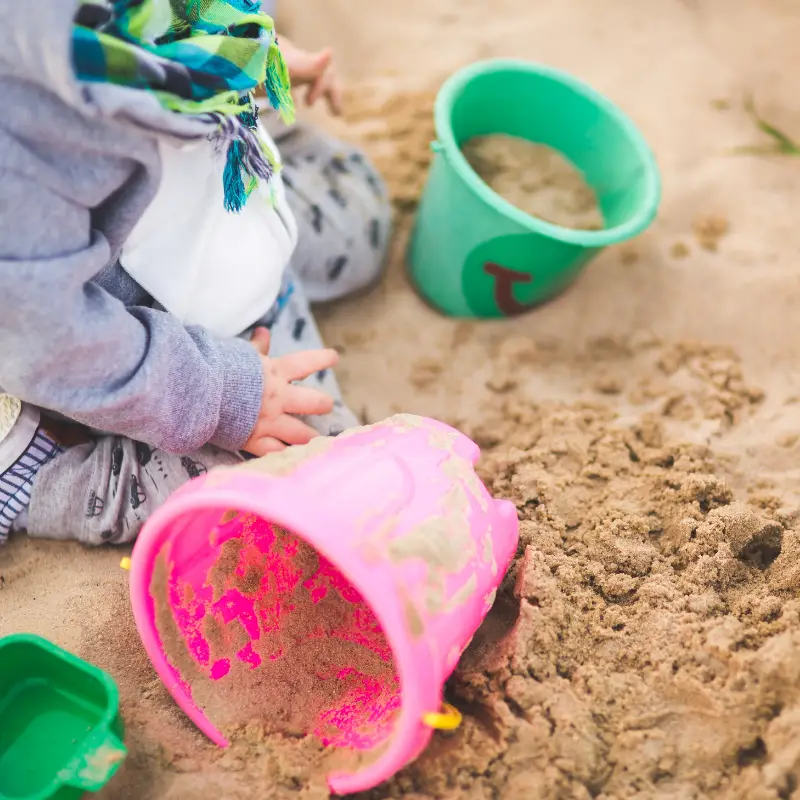
How can I encourage my child to use loose parts
Here are some tips for encouraging your child to use loose parts:
- Make the materials easily accessible: Keep the loose parts in a place where your child can easily reach them and play with them whenever they want.
- Provide a variety of materials: Offer a variety of materials for your child to choose from, including natural and man-made materials in different shapes, sizes, and colors.
- Demonstrate how to use the materials: Show your child how to use the materials in different ways, and encourage them to experiment and come up with their own ideas.
- Encourage open-ended play: Let your child use the materials in whatever way they want, without setting any rules or expectations.
- Don’t interfere: Avoid interfering with your child’s play or trying to direct them in a particular way. Instead, let them explore and experiment at their own pace.
- Offer prompts or challenges: Sometimes, providing a prompt or challenge can help spark your child’s creativity and encourage them to use the materials in new and interesting ways.
- Play with them: Join in on the play and use the materials alongside your child. This can help foster a sense of collaboration and creativity and also provides a great opportunity for bonding and connection.
Risks in loose parts play
While loose parts play can be a valuable learning experience for children, there are some risks to keep in mind. Here are some things to consider:
- Choking hazard: Small loose parts, such as beads or stones, can be a choking hazard for young children. Always supervise children during play and ensure that any materials used are safe and appropriate for their age and developmental level.
- Sharp or dangerous objects: Loose parts should not include objects that are sharp, pointed, or otherwise dangerous, as these can pose a risk of injury.
- Allergies: Children may have allergies to certain natural materials, such as grass or flowers. Be aware of any allergies your child may have and avoid using materials that may trigger a reaction.
- Hygiene: Loose parts play can sometimes involve materials that are dirty or unsanitary, such as leaves or sticks. Be sure to wash any materials that could be a source of germs or bacteria, and encourage children to wash their hands before and after play.
- Structural hazards: Some loose parts, such as rocks or heavy branches, can pose a structural hazard if used in building or construction play. Make sure that any structures built are stable and not likely to collapse or cause injury.
Overall, while there are risks associated with loose parts play, these can be mitigated through careful supervision, appropriate materials selection, and common sense safety precautions. With the right approach, loose parts play can be a fun and engaging way for children to learn and explore.
So, there you have it – the ultimate guide to loose parts play in Australia. Now, go forth and let your creativity run wild with loose parts play!


